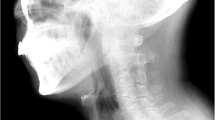Abstract
The oro-esophageal tube (OE tube) is widely used in dysphagia patients although its success rate for transition to oral feeding is reported only in stroke patients. The aim of this study was to evaluate the feasibility and outcome of OE tube feeding for patients with dysphagia resulting from various etiologies. The authors reviewed the medical records of 1995 dysphagic patients that had undergone videofluoroscopic swallowing study (VFSS) in a tertiary hospital from April 2002 through December 2009. Of these, 97 patients were recommended to use OE tube feeding based on the VFSS findings. Follow-up VFSS were performed on 54 patients. The mean duration of tube use at the time of follow-up VFSS was 274 days. We evaluated clinical information including age, sex, diet, etiology of dysphagia, location of lesions, duration of intervention, and complications of OE tube feeding. Initially, all 54 patients were fed using the OE tube. After their last follow-up evaluation, 19 patients (35.2 %) resumed full oral feeding without the OE tube, 12 patients (22.2 %) used partial OE tube feeding, and 23 patients (42.6 %) continued OE tube feeding only. Full oral feeding was achieved again most often in brain tumor, stroke, and head and neck cancer patients (54.5, 27.3, and 20.0 %, respectively). Mild adverse events, such as blood-tinged sputum, nausea, dyspepsia, and regurgitation of food, were reported in 4 patients. OE tube feeding is a feasible feeding method also in conditions other than stroke such as brain tumors, and head and neck cancers.




Similar content being viewed by others

References
Roth E. Medical complications encountered in stroke rehabilitation. Phys Med Rehabil Clin North Am. 1991;2:563–77.
McHorney CA, Robbins J, Lomax K, Rosenbek JC, Chignell K, Kramer AE, Earl Bricker D. The SWAL–QOL and SWAL–CARE outcomes tool for oropharyngeal dysphagia in adults: III. Documentation of reliability and validity. Dysphagia. 2002;17:97–114.
Logemann JA. Evaluation and treatment of swallowing disorders. San Diego: College Hill Press; 1998.
Funahashi M, Nakajima S, Ishihara K, Nishimura F. Intermittent use of an oral catheter for feeding dysphagic children. Brain Dev. 1985;17:3.
Campbell-Taylor I, Nadon GW, Sclater AL, Fisher R, Harris-Kwan J, Rosen I. Oro-esophageal tube feeding: an alternative to nasogastric or gastrostomy tubes. Dysphagia. 1988;2:220–1.
Kisa T. Intermittent oral catheterization (IOC) for dysphagic stroke patients. Jpn J Rehabil Med. 1997;34:113–20.
Nakajima M, Kimura K, Inatomi Y, Terasaki Y, Nagano K, Yonehara T, Uchino M, Minematsu K. Intermittent oro-esophageal tube feeding in acute stroke patients—a pilot study. Acta Neurol Scand. 2006;113:36–9.
Nohara K, Tachimura T, Fujita Y, Hirata S, Wada T. Case report: improved swallowing by intermittent oro-esophageal tube feeding after surgery for cancer of the oral floor and tongue. Jpn J Oral Maxillofac Surg. 2001;47:416–9.
Nozaki S, Saito T, Matsumura T, Fujimura H, Shinno S. Intermittent oral catheterization for the patients with amyotrophic lateral sclerosis. Neurol Med. 2004;60:543–8.
Kisa TSY, Okano K, Iwanari M. Proper use of intermittent oral catheter feeding (IOC) and gastrostomy for dysphagic stroke patients. Jpn J Stroke. 2010;32:41–7.
You DS, Chun MH, Kim HJ, Ryu JS, Song YJ, Park EJ, Choi KH. The effectiveness of oro-esophageal tube feeding with dysphagia after brainstem stroke. J Korean Acad Rehabil Med. 2011;35:27–33.
Chun SW, Lee SA, Jung IY, Beom J, Han TR, Oh BM. Inter-rater agreement for the clinical dysphagia scale. Ann Rehabil Med. 2011;35:470–6.
Jung SH, Lee KJ, Hong J-B, Han TR. Validation of clinical dysphagia scale: based on videofluoroscopic swallowing study. J Korean Acad Rehabil Med. 2005;29:343–50.
Han TR, Paik NJ, Park JW. The clinical functional scale for dysphagia in stroke patients. Korean J Stroke. 2001;3:153–7.
Han TR, Paik N-J, Park J-W, Kwon BS. The prediction of persistent dysphagia beyond six months after stroke. Dysphagia. 2007;23:59–64.
Association AS-L-H: National Outcomes Measurement System (NOMS): Adult Speech-Language Pathology User’s Guide. Rockville MD: American Speech-Language-Hearing Association 2003.
Kim DH, Choi KH, Kim HM, Koo JH, Kim BR, Kim TW, Ryu JS, Im S, Choi IS, Pyun SB. Inter-rater Reliability of Videofluoroscopic Dysphagia Scale. Ann Rehabil Med. 2012;36:791–6.
Kim J, Oh B-M, Kim JY, Lee GJ, Lee SA, Han TR. Validation of the videofluoroscopic dysphagia scale in various etiologies. Dysphagia. 2014;29:1–6.
Kirby DF, DeLegge MH, Fleming CR. American Gastroenterological association technical review on tube feeding for enteral nutrition. Gastroenterology. 1995;108:1282–301.
Cataldi-Betcher EL, Seltzer MH, Slocum BA, Jones KW. Complications occurring during enteral nutrition support: a prospective study. J Parent Enter Nutr. 1983;7:546–52.
Metheny NA, Meert KL, Clouse RE. Complications related to feeding tube placement. Curr Opin Gastroenterol. 2007;23:178–82.
Han TR, Paik NJ, Park JW. The Follow-up of Oro-Esophageal (OE) Tube Feeding. J Korean Acad Rehabil Med. 2001;25:58–61.
Power M, Fraser C, Hobson A, Rothwell J, Mistry S, Nicholson D, Thompson D, Hamdy S. Changes in pharyngeal corticobulbar excitability and swallowing behavior after oral stimulation. Am J Physiol Gastrointest Liver Physiol. 2004;286:G45–50.
Power ML, Fraser CH, Hobson A, Singh S, Tyrrell P, Nicholson DA, Turnbull I, Thompson DG, Hamdy S. Evaluating oral stimulation as a treatment for dysphagia after stroke. Dysphagia. 2006;21:49–55.
Conflict of interest
The authors have no conflicts of interest to declare.
Author information
Authors and Affiliations
Corresponding author
Rights and permissions
About this article
Cite this article
Kim, J., Seo, H.G., Lee, G.J. et al. The Feasibility and Outcome of Oro-esophageal Tube Feeding in Patients with Various Etiologies. Dysphagia 30, 680–685 (2015). https://doi.org/10.1007/s00455-015-9644-z
Received:
Accepted:
Published:
Issue Date:
DOI: https://doi.org/10.1007/s00455-015-9644-z



